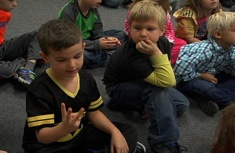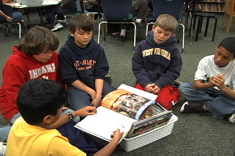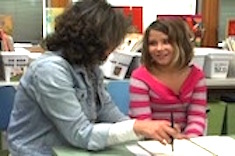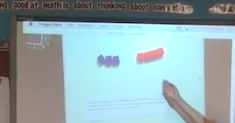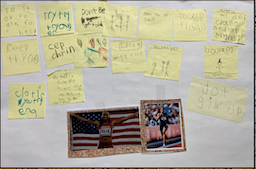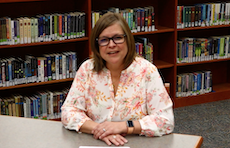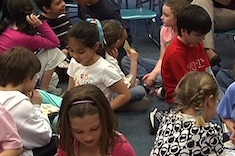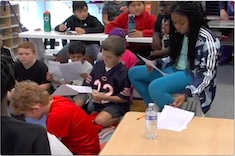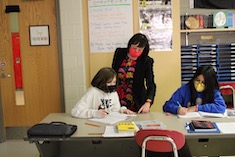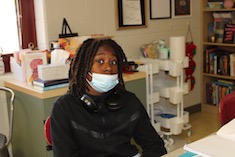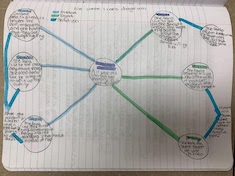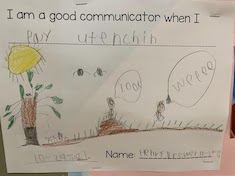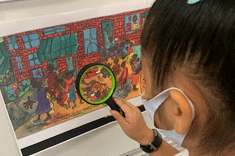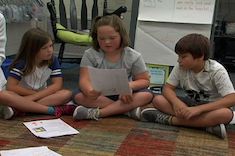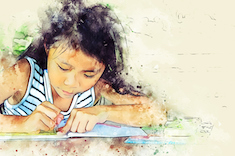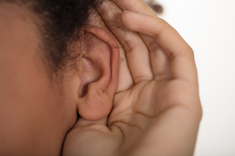Talking and Listening
Listening and speaking—it's the art at the heart of literacy workshops. But there is also a science to how these skills are taught and learned. These resources will show you how to build communication skills in your classroom and school communities.
Latest Content
Student-Generated Questions to Promote Problem Solving and Modeling with Mathematics
Mallory Messenger shares a process for students to engage and solve a type of intriguing question called Fermi Questions.
Turn and Talk, Then What?
Vivian Chen offers useful tips for seasoned and new teachers when it comes to helping students engage in a turn-and-talk.
Learning to Listen During Turn-and-Talk
Ruth Ayres suggests three ways to help students intentionally listen during conversations such as a turn-and-talk.
Building Independence in Problem Solving
Mallory Messenger shares the intentional moves needed to help students build independence in problem solving.
Assessment in Classroom Book Clubs
In this third installment about classroom book clubs, Leigh Anne Eck shares options for robust assessment as well as answers to some frequently asked questions.
Getting Started with Classroom Book Clubs (Part 1)
In the first installment of a three-part series, Leigh Anne Eck clearly lays out how to get started with book clubs. Included is an editable planning bookmark to give students more ownership of their reading schedules.
Eavesdrop on Your Students
Melissa Quimby suggests listening in on students’ conversations to find out their interests. These tidbits will help you in building connections, recommending books, and encouraging writing topics.
Still Thinking: An Opportunity to Pause and Think Deeply
Jodie Bailey provides a structure to give students more time to think through ideas and problems. By using this practice, students gain ownership of their learning.
Listening for Conjectures
Mallory Messenger shares a routine for hearing student conjectures (in math and other subjects) and a process for giving time for the class to prove or disprove the claims. Download a Conjecture—Prove or Disprove Recording Sheet to collect student conjectures in your classroom.
Student Voices First
David Pittman offers practical ways to place student voices first in classrooms in order for their passions, interests, and identities to influence our teaching.
Our Words Matter: Developing Perseverance in Literacy
Becca Burk reflects on the power of intentional language to build perseverance in students. She shares a booklist designed to give students scripts they need to become brave learners.
Math Debates: A Powerful Sense-Making Routine
Jodie Bailey shares a powerful practice of math debates for students to explore a problem with discussion and evidence to discover the correct solution.
Lifting the Quality of Hands-Down Conversations
Tammy Mulligan leads us through troubleshooting the difficult parts of launching hands-down conversations. This is the third installment of a three-part series about launching hands-down conversations.
How to Begin a Community Circle
Bitsy Parks gives direction in beginning a community circle with primary learners.
Hands-Down Conversations in the Primary Grades
Tammy Mulligan shares the steps to encouraging hands-down conversations in the first days of the school year. This is the second installment of a three-part series about launching hands-down conversations.
Using Video to Launch Hands-Down Conversations
Tammy Mulligan shares many video options to launch conversation skills in her primary classroom.
Deepening Discussion with a Circle Process
Jen Vincent strengthens the authenticity of a share session in writing workshop by building and tending to relationships that honor a circle process that originated in Indigenous communities.
What Criteria Should We Use When Selecting Whole-Class Texts?
Christy Rush-Levine reminds us that text selection affects students. By shaping a unit of study to contain texts of varying formats and representing a wide variety of characters, students are empowered to develop their own ideas even while reading a whole-class text. Download a diverse text list to deepen a discussion of how family shapes identity.
Tips for Selecting Inclusive Texts
Hannah Tills and Josie Stewart challenge themselves to select more inclusive texts so all students feel as though they belong. They offer six suggestions to help us examine our bookshelves, thinking, and curriculum.
Using Digital Photos to Enhance Learning
Stella Villalba uses photos in the classroom as a powerful tool for critical thinking and reflection. Photos allow students to process complex learning as it happens.
Presence Required
Christy Rush-Levine reminds us that it requires presence to sit alongside young readers and writers. In two examples, we find resilience for meeting students at their points of need and then teaching them as readers and writers.
What Is Communication? A Mini-Inquiry Project and Booklist
Bitsy Parks leads her first-grade class in a study about communication to strengthen their socially distanced and muffled-by-masks community. Included is a booklist.
Using Art to Bridge Storytelling
Stella Villalba creates space for students to deeply notice the way artist Aminah Robinson uses images to share stories and testimonies.
Field Notes: 6 Ways to Respond Remotely to Build a Community of Writers
Ruth Ayres observes a writing workshop that is remote. She reflects on the ways students offer feedback and how their community of writers is established.
Honoring Student Identity
Christy Rush-Levine considers how to communicate to all students that their presence and their identities are valued and appreciated.
Socratic Discussion in Third Grade
Lora Bieghler facilitates a Socratic-style discussion among third graders.
Collaborating for Understanding in Writing
Mark Levine realizes explaining expectations for an essay assignment over and over again isn’t working. But when he has students write in pairs for a portion of his workshop, magic happens.
Whole-Class Reflection in Middle School
Mark Levine explains why whole-class reflection is an essential component of his middle school workshops.
Young Learners and Self-Talk
Do you have young readers and writers in your class who constantly talk to themselves? Stella Villalba helps a teacher decode the value of this self-talk for first grader Kayla, using it as a springboard for more learning.
Helping Students Develop Conversational Identity
Jen Schwanke writes about the challenges of helping students develop conversational identities, providing prompts to help teachers reflect on their strengths and needs in fostering talk in classrooms.
Browse Content By
Type
Category
- Assessment Tools
- Big Fresh Archives
- Booklists
- Choice Numeracy
- Classroom Design
- Common Core
- Community Building
- Conferring
- Content Literacy
- Digital Literacy
- English Language Learners
- Equity
- Family Relations
- Free Samples
- Guiding Groups
- Leadership
- Literacy Coaches
- Mentor Texts
- Minilessons
- New Teacher Mentors
- Podcasts
- Poetry
- Quote Collections
- Reading Strategies
- Self Care
- Struggling and Striving Learners
- Talking and Listening
- Teacher Study Groups
- Teaching Reading
- Teaching Writing
- Word Study and Vocabulary
Author
- Melissa Quimby
- Nawal Qarooni
- Gwen Blumberg
- Julie Cox
- The Lead Learners
- Hannah Tills
- Josie Stewart
- Ruth Metcalfe
- Mallory Messenger
- Becca Burk
- Jodie Bailey
- Vivian Chen
- Mary Brower
- Tiffany Abbott Fuller
- Stephanie Affinito
- Ruth Ayres
- Leigh Anne Eck
- Heather Fisher
- Shari Frost
- Julie Johnson
- Suzy Kaback
- Gigi McAllister
- Shirl McPhillips
- Melanie Meehan
- Cathy Mere
- Debbie Miller
- Tara Barnett and Kate Mills
- Tammy Mulligan
- Dana Murphy
- Bitsy Parks
- David Pittman
- Brenda Power
- Heather Rader
- Matt Renwick
- Mandy Robek
- Christy Rush-Levine
- Gretchen Schroeder
- Jen Schwanke
- Brian Sepe
- Katherine Sokolowski
- Stella Villalba
- Jennifer Vincent
Grade Level
Choice Literacy Membership
Articles
Get full access to all Choice Literacy article content
Videos
Get full access to all Choice Literacy video content
Courses
Access Choice Literacy course curriculum and training

